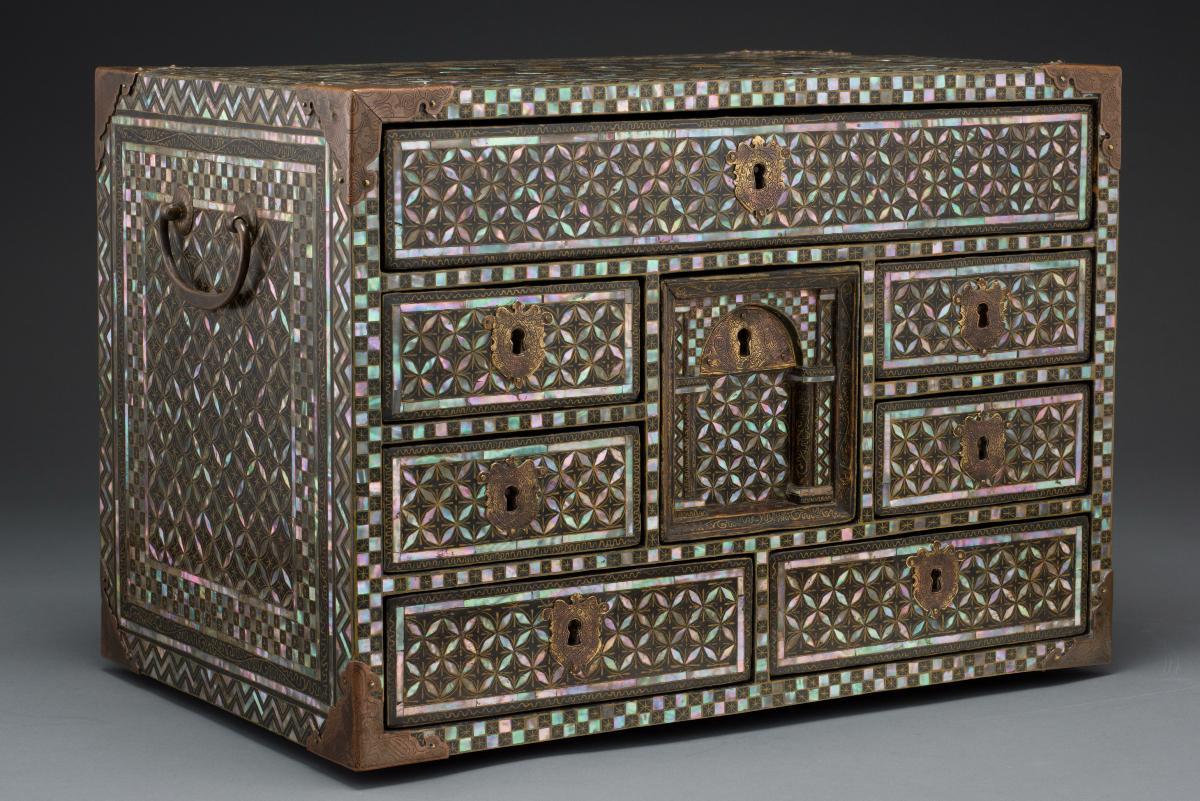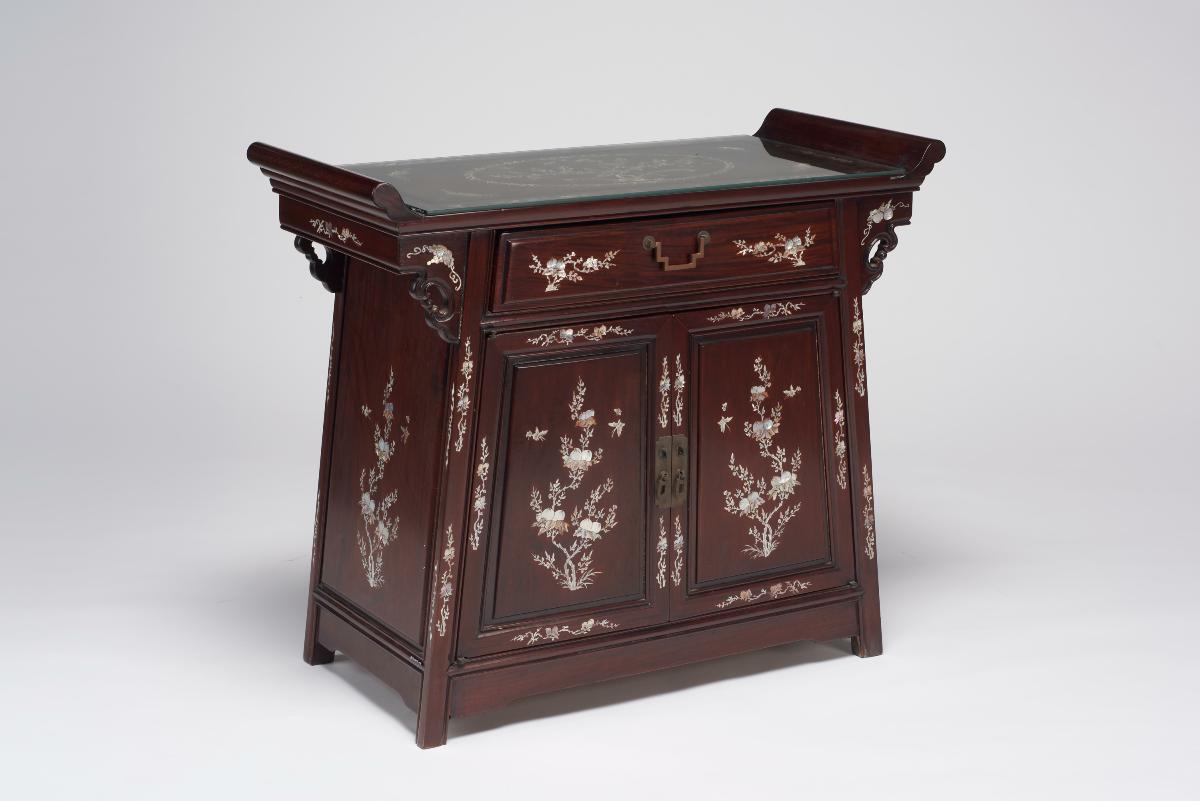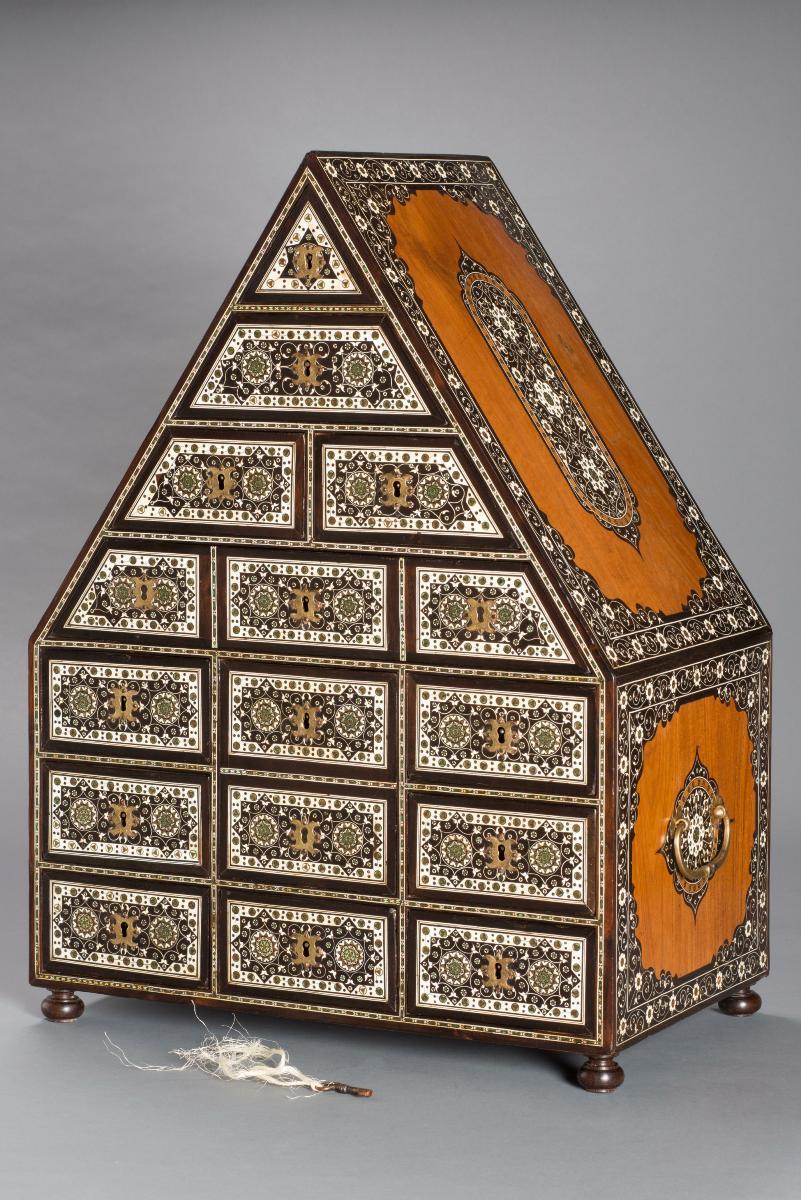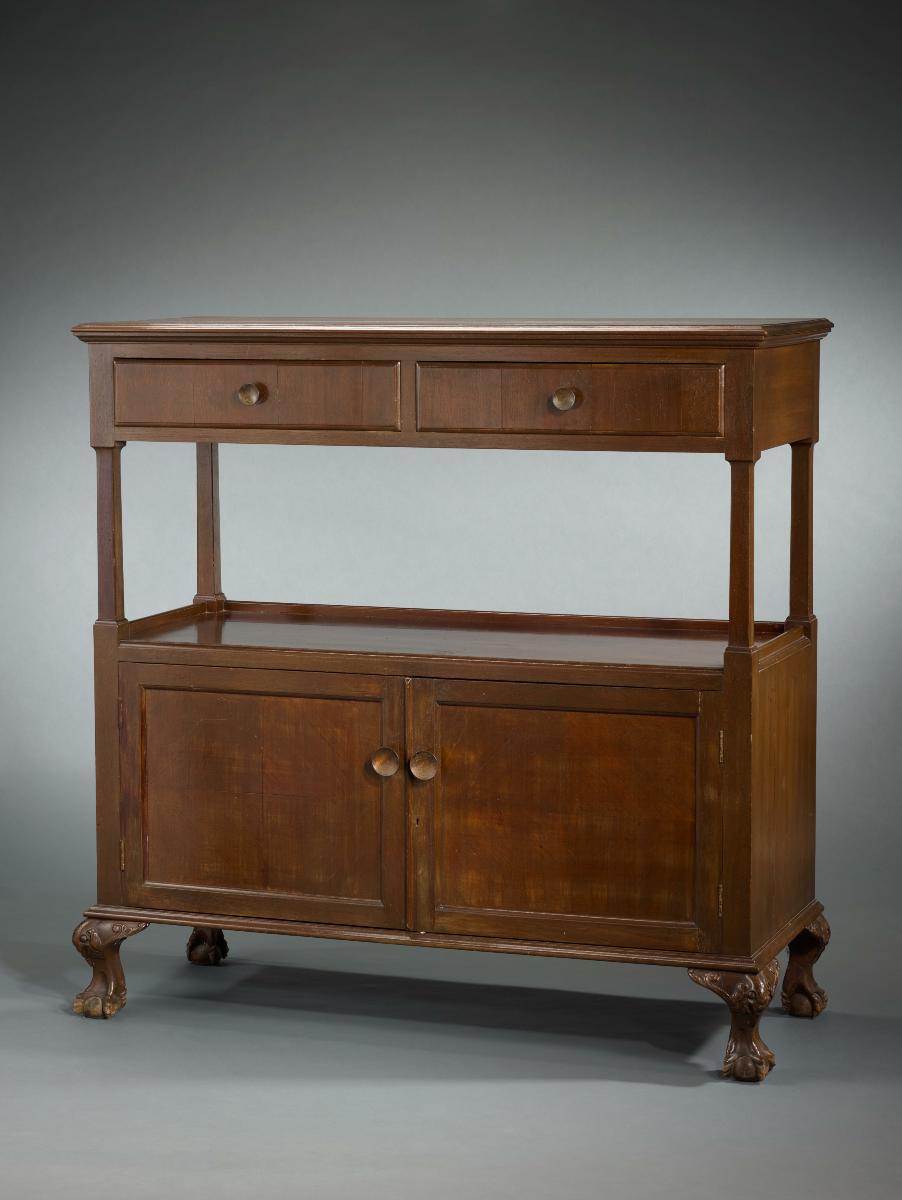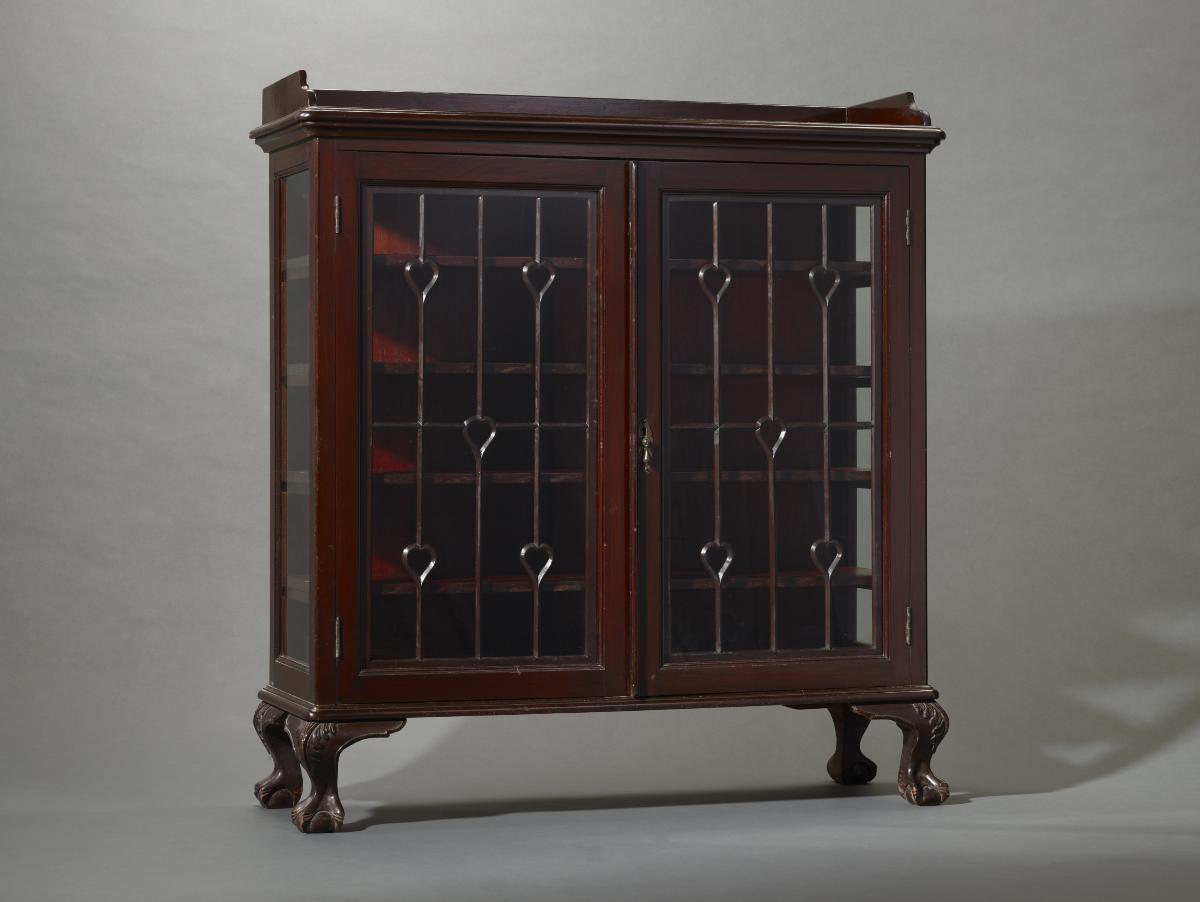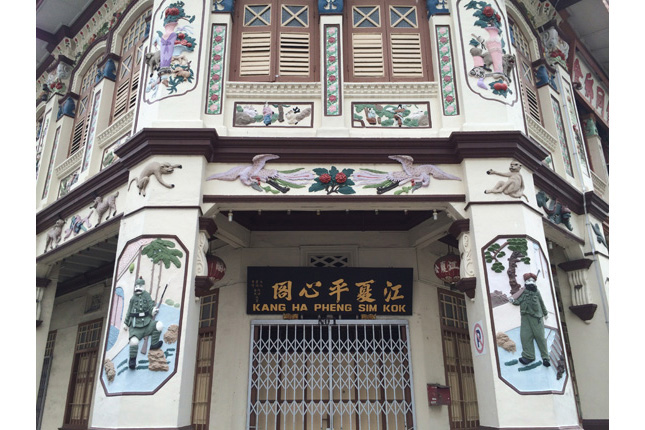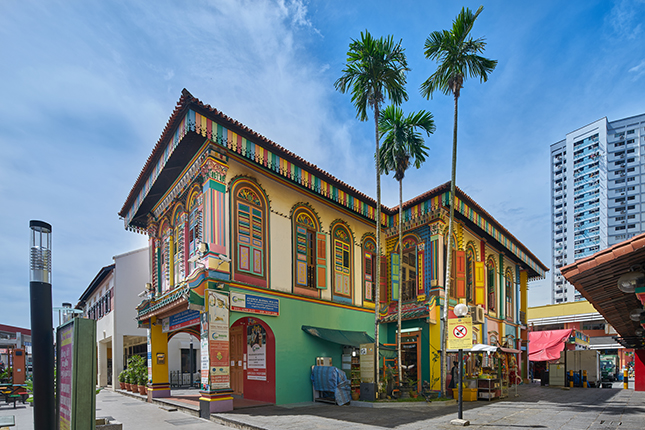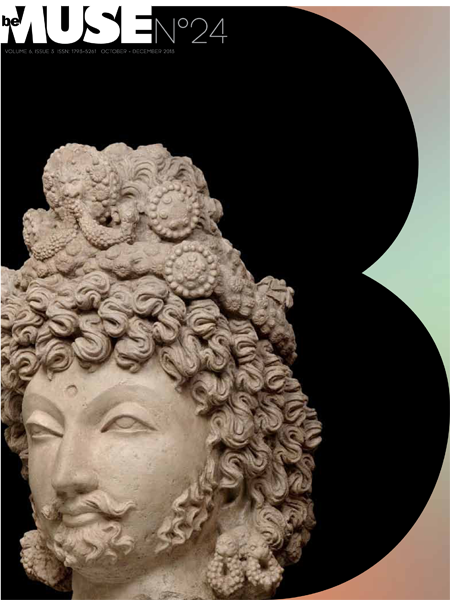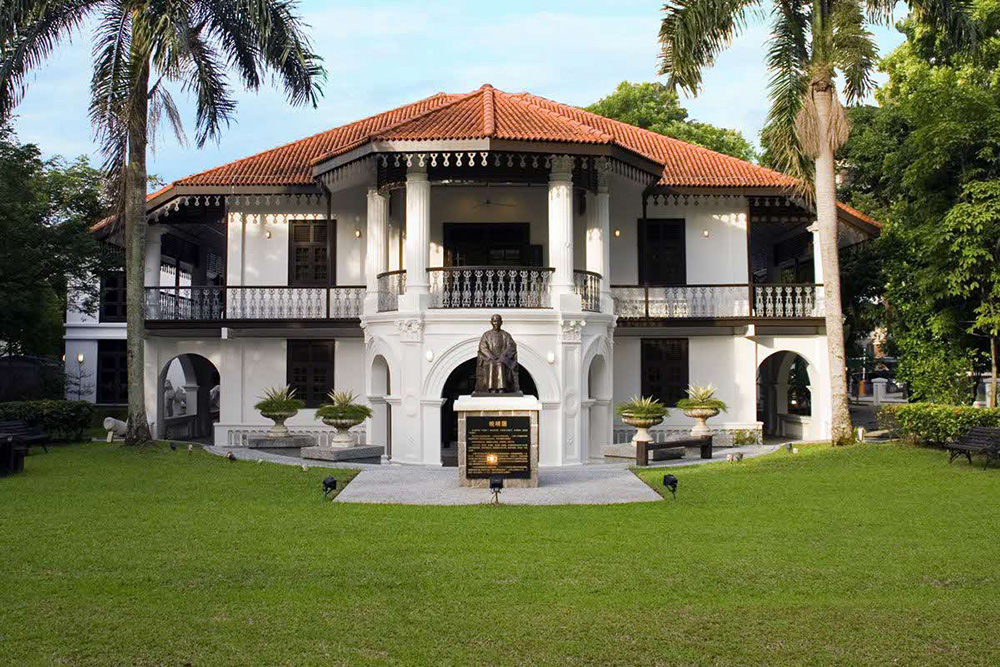Lacquered furniture was one of the various products exported to Europe from Japan. They were decorated in the so-called namban (foreigners from the South) style. In the late sixteenth and seventeenth century, the word namban was applied to all foreigners except the Chinese and the Koreans. As such, the word also came to be associated with artefacts made by, depicting, or made for foreigners. The customers for namban lacquers were the Portuguese, who first arrived in Japan in 1542 or 1543. The cabinet without a fall front door is inlaid with raden (mother-of-pearl) on a black lacquer background with embellishments in gold. This type of cabinet was introduced in Japan with the arrival of the Portuguese, and is certainly based on Portuguese models from the 16th century. The inlay work repeatedly emphasises on the shippo or ‘cash’ pattern of interlocking circles; a favourite design feature in Japanese lacquerware during the late sixteenth and early seventeenth century.




